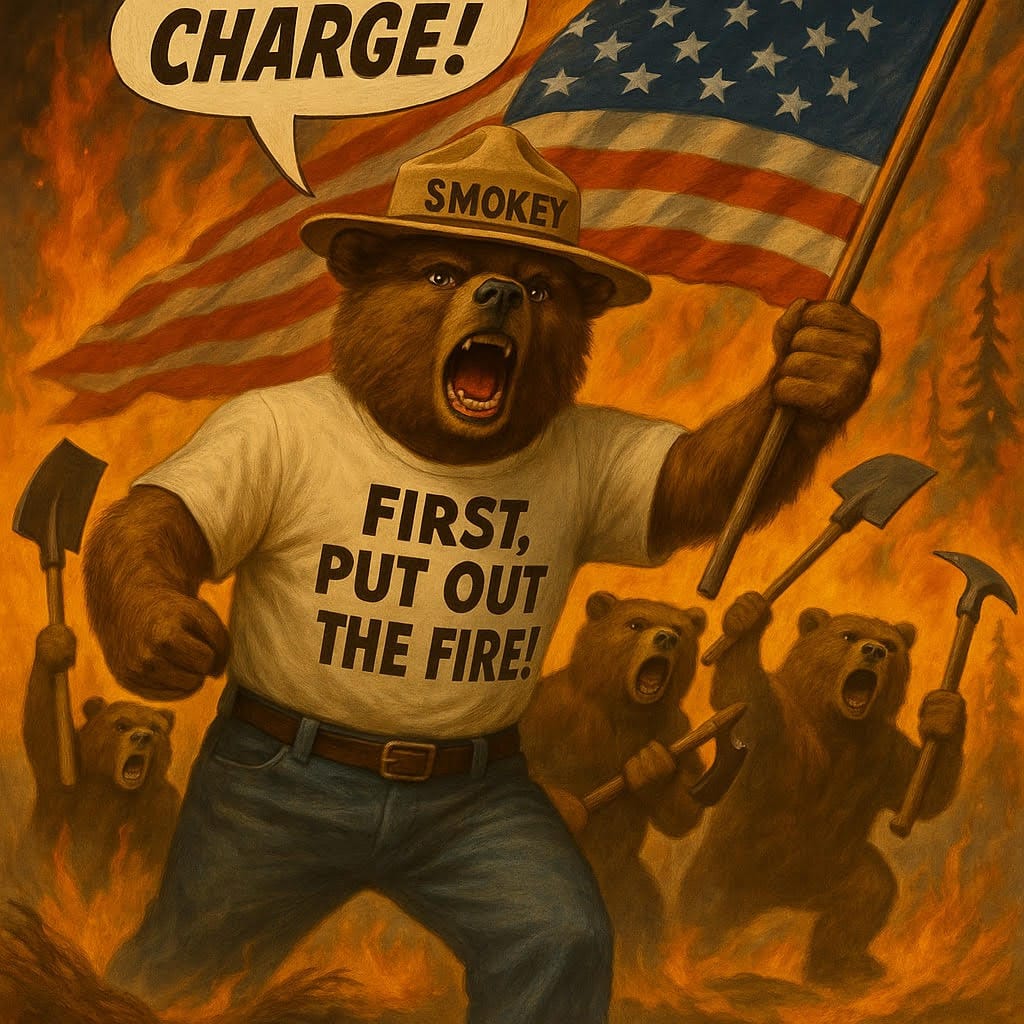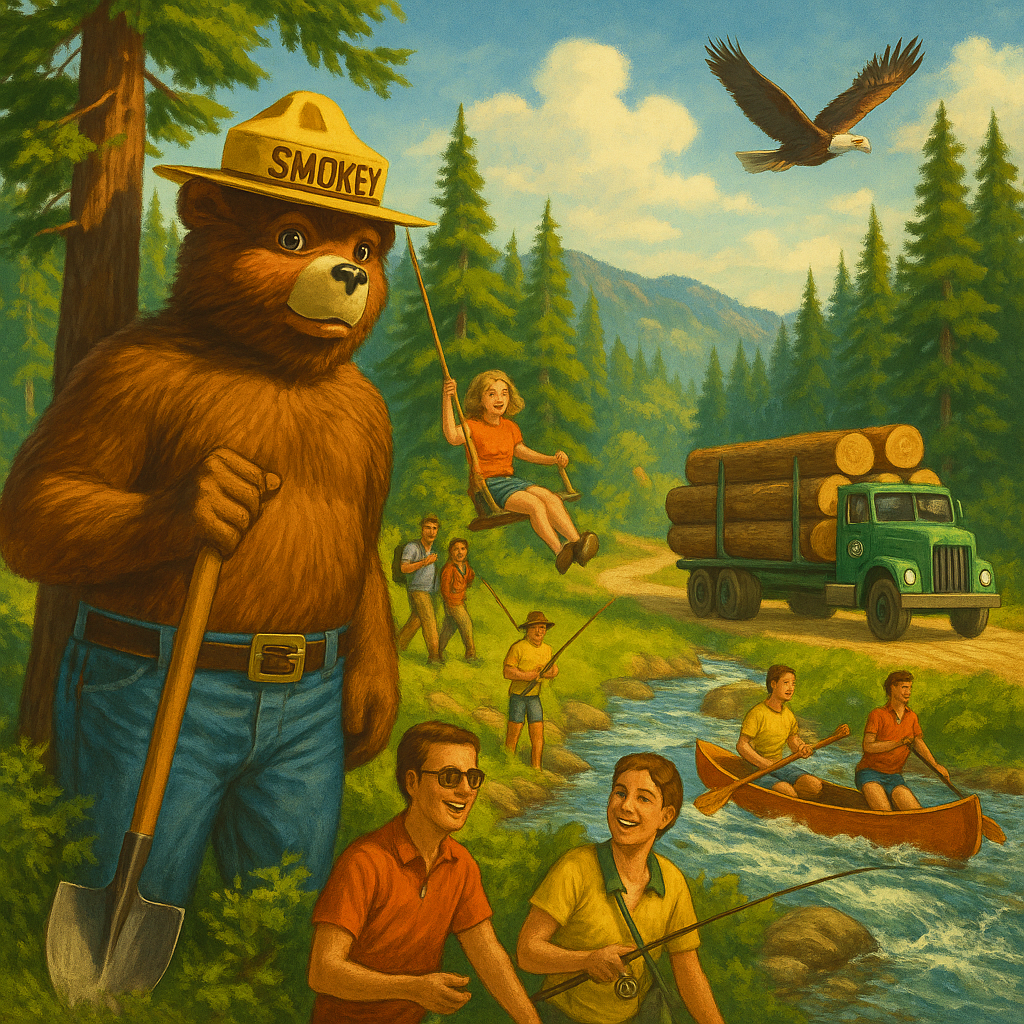A Quick Clarification - And a Thank You
You’re seeing a few more updates this month because we’re working hard to secure Evergreen’s future and

In Evergreen's 40-year history, no topic has commanded more of our attention than wildfire, not even the runup to the 1990 Northern Spotted Owl listing, one of the most egrigrious political decisions the federal government has ever made.
When controlled burns go bad is the latest of dozens of essays designed to keep you abreast of the best thinking in the wildfire world. It is a well-researched report co-authored by our colleagues, Bob Zybach, a PhD environmental scientist and Frank Carroll, President, Professional Forest Management. Frank has forgotten more about fighting wildfires than we will ever know and Bob has done years of pioneering research concerning Native fire in western Oregon's forests.
With permission, we've lifted their essay from the new edition of Cristy Rein's Oregon Fish and Wildlife Journal. Thanks Cristy!
The wider issues involving wildfire are [1] carbon sequestration rates and [2] where carbon from fire-killed forests can be stored. Currently, we store most of the carbon released from wildfires in the atmosphere and in our lungs. Fortunately, science and technology have given us far healthier alternatives.
Thousands of reports published over decades tell us that carbon sequestration occurs at a much faster rate in forests that are promptly replanted following a wildfire or a harvest.
But seqestration rates differ in softwood and hardwood tree species. When trees are harvested, their carbon is stored in hundreds of everyday wood and paper products. But if the trees are killed in a wildfire, their carbon is released into the air we breathe. Two reports describing these processes appear here:
Decades of applied science give us two options. One is to promptly salvage fire-killed timber and transform it into useful wood products, biomass, used as fuel in power plants or biochar, used in soil remediation to absorb toxic metals.
Unfortunately, salvaging fire-killed timber has been politically contentious since the Spotted Owl Wars. We're told salvage logging is like "mugging a burn victim." Federal forest managers don't salvage their burnt timber.
Another option is to grind the dead trees into small chips and spread them on the ground to hasten their return to the soil. But this requires that the trees be felled before they are ground up. Most environmentalists advocate for leaving standing dead trees in place until they fall over or are knocked down by wind.
If we do this, we must accept the very real possibility that these standing dead trees will reburn in a second wildfire long before they topple over and disappear into the soil. Because most of the reburning occurs at ground level the second burn will burn much hotter and do far more soil damage than the first fire.
This doom loop leads back to the Zybach-Carroll collaboration and the fact that the only way to effectively reduce wildfire risks in federally-owned forests is to control insect and disease infestations that inevitably lead to wildfire.
The best tools for doing this are thinning and prescribed burning in forests that hold too many trees for the carrying capacity of the land. These purposefully set fires are lit in the Spring when it is safer to burn. They consume limbs and other woody slash. But the burning window is very narrow because local or state air quality regulations often limit prescribed burning to a few weeks.
Private, state and tribal landowners use these tools every Spring because they comprise the easiest way to maintain forest heath and vigor in residual trees. It's also much cheaper than picking up the pieces following a bad wildfire.
We asked Frank Carroll if he could illustrate these points in the same fashion that he illustrated the Forest Service's use of incinderary dragons eggs in the 2020 August Complex Fire. Here's Frank's haunting illustration.

Our colleagues, Roger Jaegel and James Montgomery, wrote an essay for us in 2022 titled Burning Ruth. Ruth was one of the small northern California towns destroyed by the 2020 August Complex Fire. Input Burning Ruth on your search bar and their essay will pop up.
So here's what Frank sent in response to our latest request. As much as we like "Charge" because Smokey is wearing a First, Put Out the Fire! T-shirt, we like "Smiling Smokey" better because it serves as a constant reminder of what we are all losing because the federal government is not effectively managing our western National Forests.


You 100% tax-deductible subscription allows us to continue providing science-based forestry information with the goal of ensuring healthy forests forever.